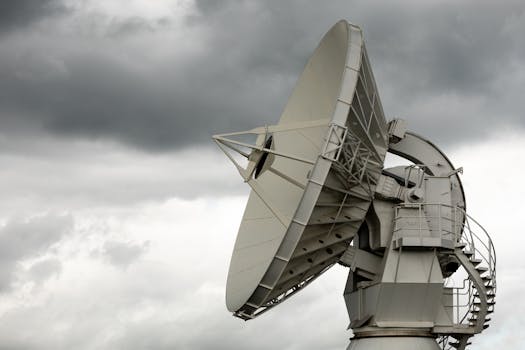GEO Satellites: Introduction to Geostationary Satellites
GEO satellites, or geostationary satellites, are a type of satellite that orbits the Earth at an altitude of approximately 36,000 kilometers, which is the same distance as the Earth’s equatorial radius. This unique orbit allows GEO satellites to remain stationary relative to a fixed point on the Earth’s surface, making them ideal for communication, navigation, and weather forecasting applications. The focus keyword GEO satellites is used to describe these satellites, which have been in use for decades and continue to play a vital role in modern technology.
The concept of GEO satellites was first proposed by scientist Arthur C. Clarke in 1945, and the first geostationary satellite, Syncom 2, was launched in 1963. Since then, numerous GEO satellites have been launched, and they have become an essential part of modern communication and navigation systems. GEO satellites are used for a variety of applications, including television broadcasting, telecommunications, weather forecasting, and navigation.
How GEO Satellites Work
GEO satellites work by transmitting and receiving signals to and from Earth-based stations. The satellite’s orbit is synchronized with the Earth’s rotation, allowing it to remain stationary relative to a fixed point on the Earth’s surface. This enables the satellite to provide continuous coverage of a specific region, making it ideal for applications such as television broadcasting and telecommunications.
The satellite’s transmission and reception signals are processed through a series of transponders, which are essentially amplifiers that boost the signal strength. The signals are then transmitted back to Earth, where they are received by Earth-based stations and decoded for use. GEO satellites use a variety of frequencies, including C-band, Ku-band, and Ka-band, to transmit and receive signals.
Applications of GEO Satellites
GEO satellites have a wide range of applications, including television broadcasting, telecommunications, weather forecasting, and navigation. They are used to transmit television signals, providing coverage to remote and underserved areas. They are also used for telecommunications, providing internet and phone services to areas where traditional infrastructure is lacking.
In addition to communication applications, GEO satellites are used for weather forecasting and navigation. They provide images of the Earth’s surface, allowing meteorologists to track weather patterns and predict storms. They are also used for navigation, providing location information and timing signals for GPS systems.
Advantages and Limitations of GEO Satellites
GEO satellites have several advantages, including their ability to provide continuous coverage of a specific region, their high signal strength, and their long lifespan. They are also relatively low maintenance, as they do not require frequent adjustments to their orbit.
However, GEO satellites also have some limitations. They are expensive to launch and maintain, and they can be affected by space debris and solar flares. They are also limited in their ability to provide high-speed data transmission, as their signals can be affected by atmospheric interference.
In conclusion, GEO satellites play a crucial role in modern communication and navigation systems. Their unique orbit and ability to provide continuous coverage of a specific region make them ideal for a variety of applications. While they have some limitations, their advantages make them a valuable tool for industries such as telecommunications, weather forecasting, and navigation.

